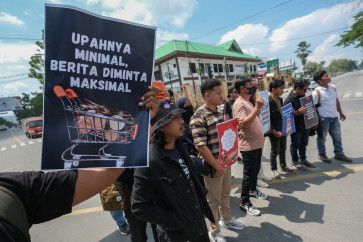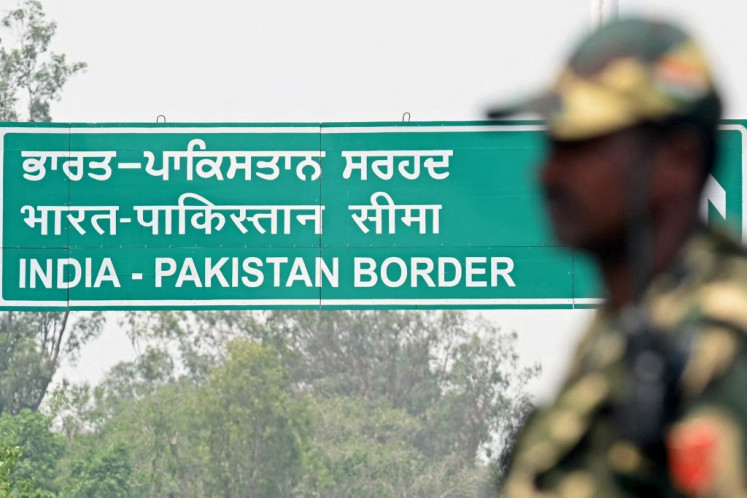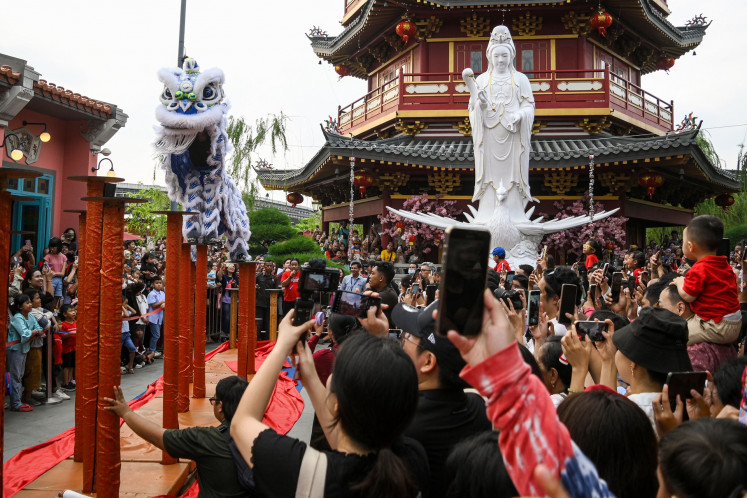US, ASEAN to reaffirm ties at NY summit
It will be a short luncheon at the Waldorf Astoria in New York on Friday, but organizers still call it a summit, the second of its kind involving the president of the United States and the leaders of ASEAN
Change text size
Gift Premium Articles
to Anyone

I
t will be a short luncheon at the Waldorf Astoria in New York on Friday, but organizers still call it a summit, the second of its kind involving the president of the United States and the leaders of ASEAN.
President Barack Obama has invited ASEAN leaders, who usually gather in New York at this time of the year for the UN General Assembly, to meet with him to discuss ways of further enhancing relations between the US and the 10 countries from what Washington officials increasingly describe as a dynamic region.
Conspicuously missing will be the big stature of Indonesian President Susilo Bambang Yudhoyono.
Instead, Vice President Boediono checked into the nearby InterContinental Hotel Barclay on Thursday as soon as he landed here to represent Indonesia.
Myanmar is the other country not represented by its top leader, probably just as well as Obama will likely raise tough questions about the November general elections that the Myanmar junta is organizing.
The gist of the meeting isn’t likely to generate the attention of the international media more drawn into the Burma issue.
The leaders will take up where they had left off after the inaugural US-ASEAN summit in Singapore in November, when they identified areas for closer and deep cooperation, including in trade and investment, regional security, disaster management, food and energy supply and climate change.
Boediono made the short visit here to also meet with former president Bill Clinton and lunch with entrepreneurs and meet with the Indonesian community in New York.
As a further sign of greater US engagement with ASEAN, US Secretary of State Hillary Clinton plans to travel to Hanoi later this year for the East Asia Summit (EAS), an annual meeting involving the 10 ASEAN countries and China, Japan, South Korea, India, Australia and New Zealand.
The EAS, with ASEAN driving the process, now appears to be the chosen venue to build an East Asian Community, especially now that Russia and the US have both agreed to the terms set for their involvement.
Washington overcame the last hurdle when Clinton last year signed the ASEAN Treaty of Amity and Cooperation that effectively bound countries to commit to working toward peace and stability in the region.
While Indonesia and other ASEAN countries welcome the greater engagement of the US with the region, they are wary that Washington would use this as a platform to forge alliances to counter the rapid rise of China.
Clinton raised eyebrows when she urged China to guarantee maritime security in the South China Sea during a meeting with ASEAN counterparts in Hanoi in June.
China has insisted that the overlapping territorial claims in the South China Sea should be resolved by countries in the region to the exclusion of others.
With China embroiled in a similar territorial dispute with Japan, another US ally, ASEAN fears a new kind of cold war between the US and China is evolving.
“I don’t think ASEAN should be dragged into this conflict,” an ASEAN diplomat said.
Editorial Page 6









